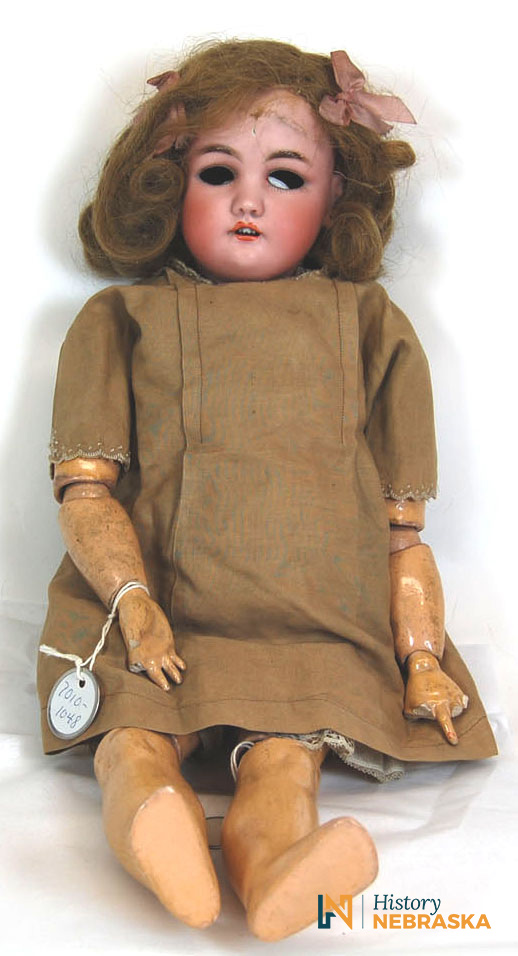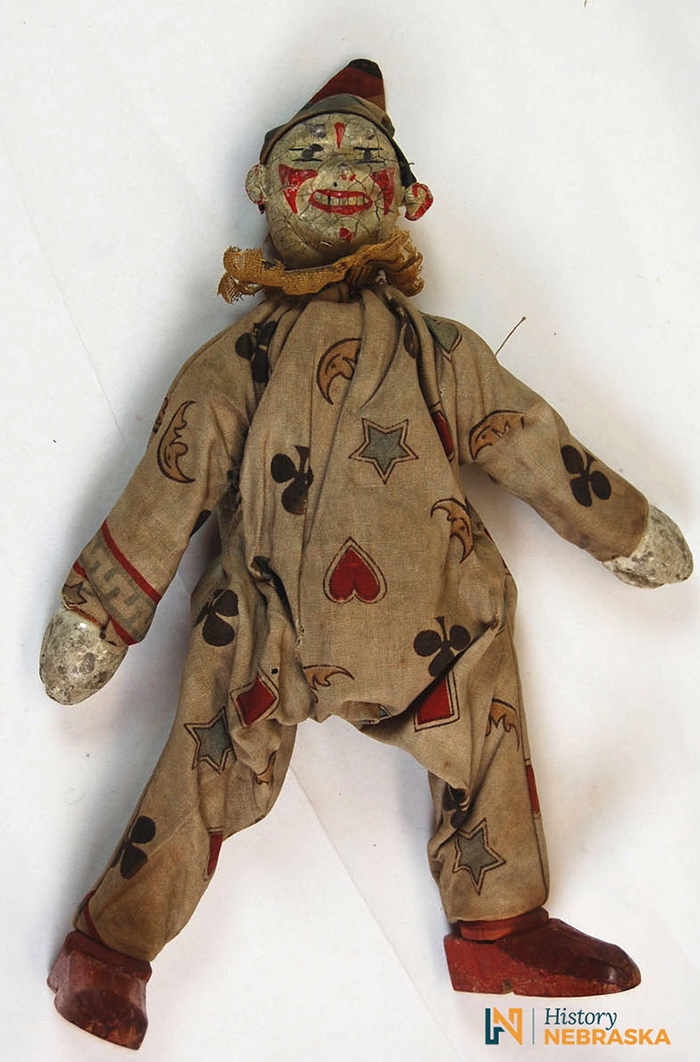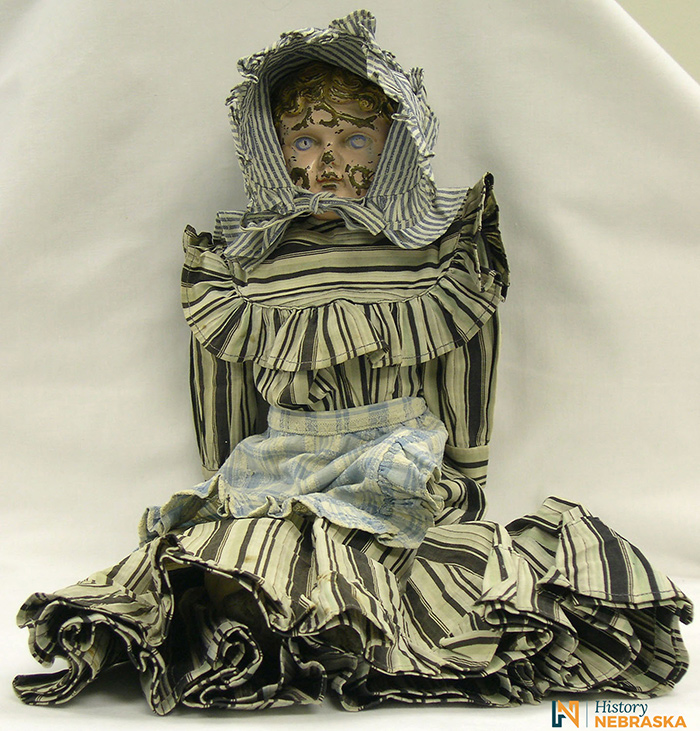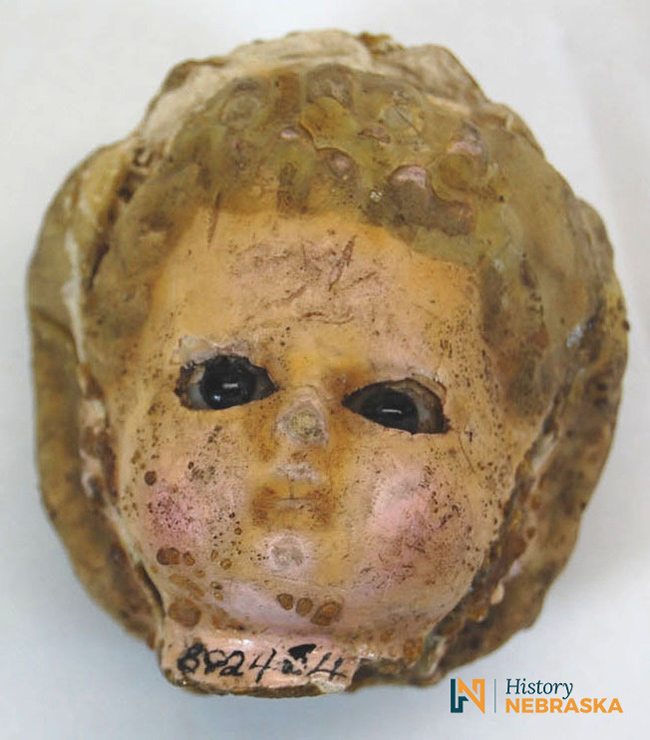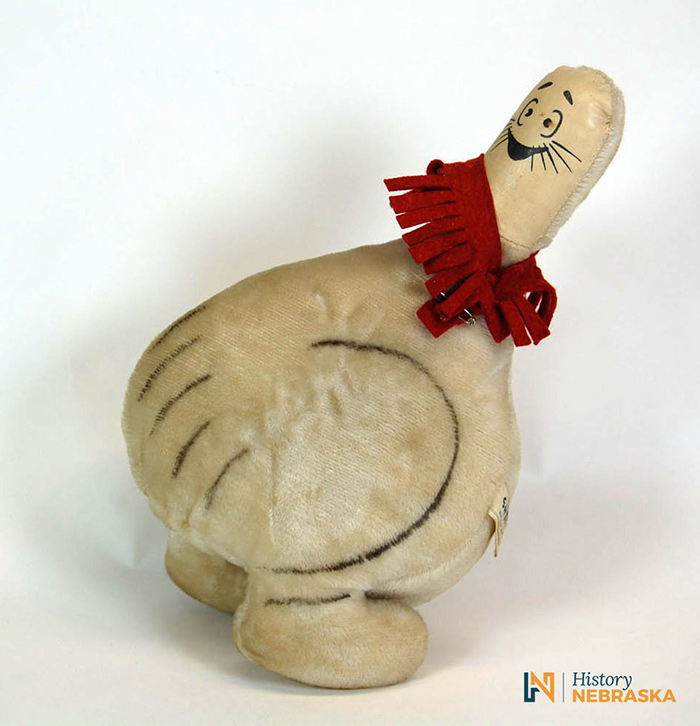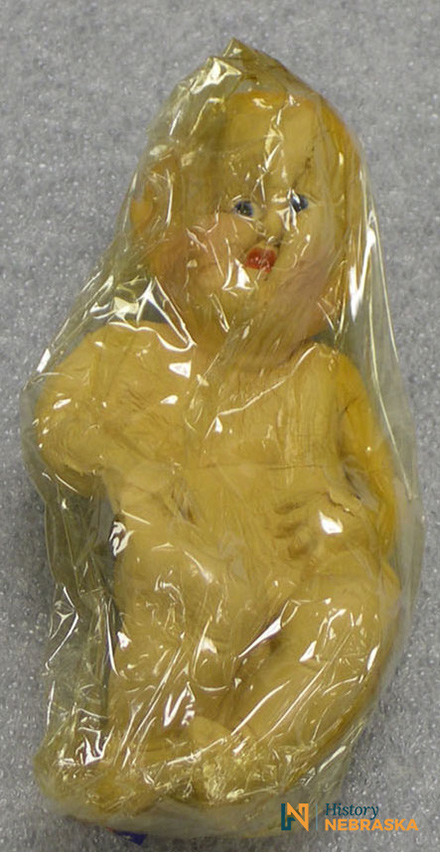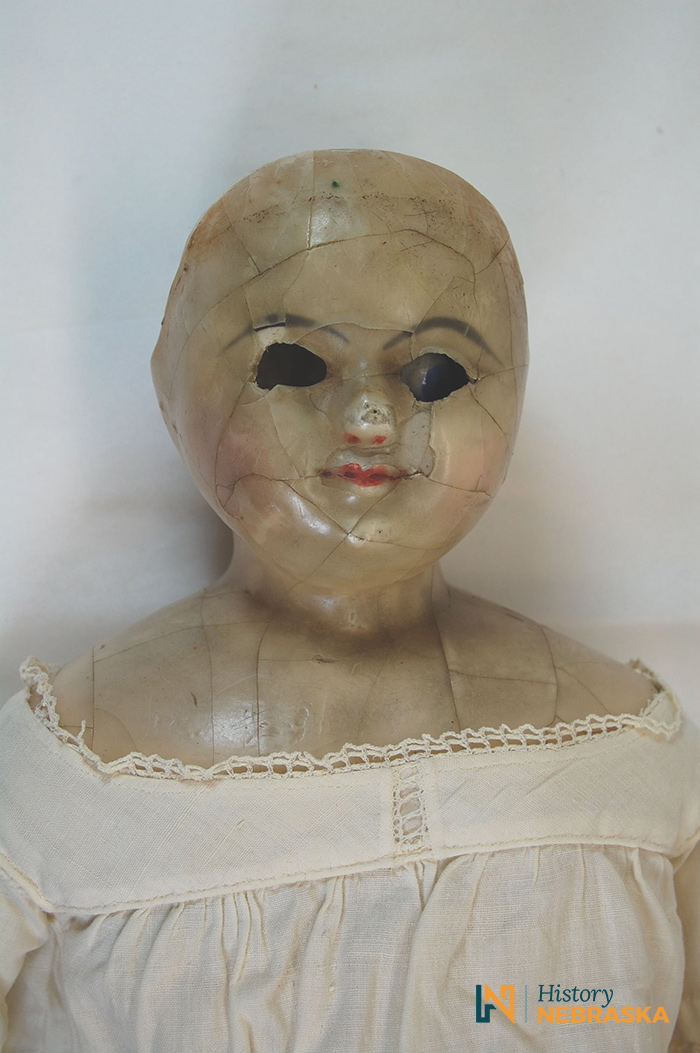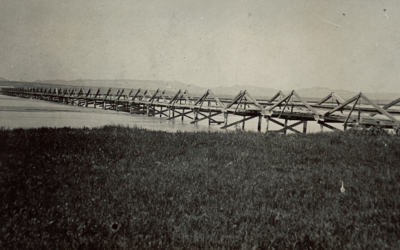Those who follow History Nebraska on Facebook, Twitter, or Instagram will no doubt recognize these nine dolls from our recent social media haunted doll contest, where we asked our followers to help us choose Nebraska’s Next Spookiest Doll.
Well, the votes are in and we’re ready to announce the winner! But we also want to tell you a little bit about each of them, so we’ve included some background information in the listings below.
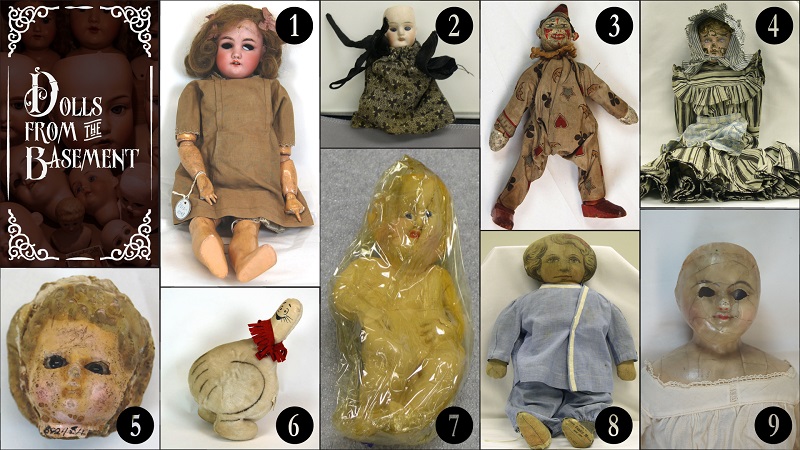
Those who follow History Nebraska on Facebook, Twitter, or Instagram will no doubt recognize these nine dolls from our recent social media haunted doll contest, where we asked our followers to help us choose Nebraska’s Next Spookiest Doll.
Well, the votes are in and we’re ready to announce the winner! But we also want to tell you a little bit about each of them, so we’ve included some background information in the listings below.
Doll #1. 5th place (7% of votes)
This doll was collected by Elizabeth Gaylord Rathburn of Lincoln, who collected dolls from around the world and donated them to History Nebraska in 1948. It is a bisque doll and is made of bisque or biscuit porcelain. Usually, either just their head was bisque, or their head and limbs. Dolls in this style peaked in popularity between 1860 and 1900.
Doll #2. 6th place (5% of votes)
This doll comes from the Sheldon Family collection and was owned by Ruth Sheldon of Lincoln. Ruth was the daughter of A.E. Sheldon, our very first director! She named the doll after her sister, Esther, who was also the one that sewed the doll’s clothes.
The doll is made entirely of bisque porcelain. It has facial features, shoes, and socks that have been painted on.
Doll #3. 2nd place (20% of votes)
This is a clown doll from the Humpty Dumpty Circus, made by Shoenhut of Philadelphia, Pennsylvania. The company made wooden toys from the 1870s to 1925. This particular doll was probably made between 1903 and 1905. It was collected by Elizabeth Gaylord Rathburn of Lincoln, who collected dolls from around the world and donated them to us in 1948.
The doll has a wooden body and limbs, with its face painted white and red. Its suit has a print that includes hearts, stars, clubs, and moons.
Doll #4. 1st place (36% of votes)
We have a winner! This tin doll belonged to one of the three daughters of Nebraska Senator George W. Norris. The doll has a tin head/shoulders, kid leather body, jointed limbs, cloth legs, and china hands. She is likely stuffed with sawdust.
Doll #5. 7th place (4% of votes)
This head is from a doll that belonged to Eunice Bull Kimberly. Eunice was living in Sibley, Iowa in 1885 when she married William Henry Kimberly. In 1890 they moved to Crete Nebraska and in 1892 to Lincoln.
The head is made of wax over plaster and has brown glass eyes and blond hair. It’s made in a 1805s-60s style.
Doll #6. 9th place (1% of votes)
A Schmoo doll based on the character from the Lil Abner comic strip, which ran from 1934-1977. Schmoo first appeared in 1948 and Schmoo merchandise became popular in the late 1940s and early 1950s. This doll was made by Gund Manufacturing Co. in New York.
The doll itself is plush with a tan oilcloth face.
Doll #7. 3rd place (14% of votes)
This doll was collected by Elizabeth Gaylord Rathburn of Lincoln. It’s part of a set of five, commemorating the birth (and survival) of identical quintuplets, born May 28, 1934 in Ontario, Canada. Their unlikely survival provided the public with hope and distraction during the Great Depression.
The local government took the girls away from their parents to protect them from exploitation and built a hospital across the street from the family home exclusively for them. It was intended to protect their privacy, however, it quickly became a tourist destination (“Quintland”) and between 1934 and 1943, it received over three million visitors. The quintuplets generated an impressive amount of memorabilia, including the dolls, laundry detergent, books, and more.
After spending nine years in the hospital, their parents, Elzrie and Olivia Dionne, won a custody battle with the Ontario government and the girls were returned to their parents.
The doll itself is made of rubber and is still in its original plastic wrapper. However, it has been severely distorted over time.
Doll #8. 8th place (3% of votes)
This doll was purchased by the donor at an auction in Weeping Water, Nebraska. The doll was made by Art Fabric Mills of New York, and patented Feb. 13, 1900.
Doll #9. 4th place (10% of votes)
This doll is from the family of Charles H. Gere, who started Lincoln’s first newspaper in 1867 and served in both the state legislature and state senate. He married Mariel E. Clapham and together they had three daughters Mariel, Ellen, and Frances. Unfortunately, we don’t know which of them this doll belonged to.
The doll is a wax head over paper mache with a cloth body. It is missing its hands, along with its hair and one eye.

